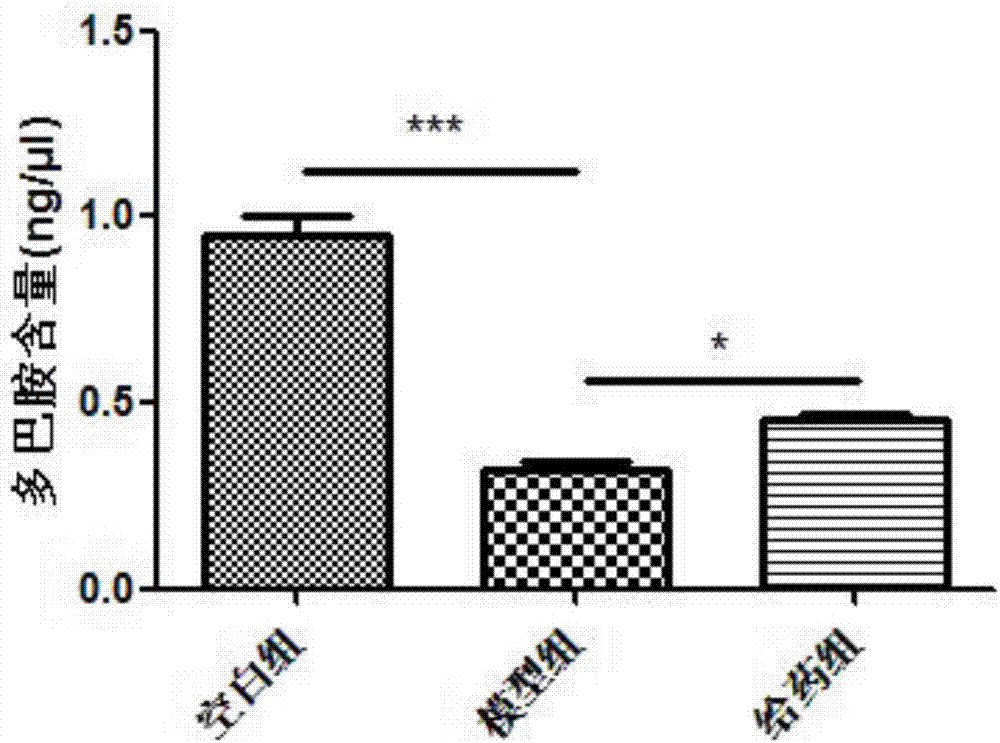Drug for potentially treating Parkinson's disease
A Parkinson's disease and drug technology, applied in the field of medical neuropharmacology, can solve the problems of unclear, cumbersome medication, complex raw material formula, etc., and achieve the effect of improving the symptoms of bradykinesia
- Summary
- Abstract
- Description
- Claims
- Application Information
AI Technical Summary
Problems solved by technology
Method used
Image
Examples
Embodiment 1
[0027] Example 1: Establishment and grouping of animal models
[0028] 20-25g, 8 weeks old, male C57BL / 6 mice were randomly divided into blank group, MPTP model group (MPTP first and then saline), aucubin administration group (MPTP first and peach leaf Coralin), 20 per group. Placed at 23±2°C, the lighting time is 12h / day, and the animals start to be given drugs after one week of acclimatization to the environment. In the MPTP model group, MPTP (30 mg / kg) was injected intraperitoneally once a day for 5 consecutive days, and then physiological saline was injected intraperitoneally once a day for 7 consecutive days. The administration group received MPTP (30mg / kg) intraperitoneal injection once a day for 5 consecutive days, and then intraperitoneal injection of aucubin (50mg / kg) solution once a day for 7 consecutive days. The blank group was given normal saline for 12 consecutive days. Subsequently, the behavior of the mice was evaluated by the climbing rod experiment, and then ...
PUM
 Login to View More
Login to View More Abstract
Description
Claims
Application Information
 Login to View More
Login to View More - R&D
- Intellectual Property
- Life Sciences
- Materials
- Tech Scout
- Unparalleled Data Quality
- Higher Quality Content
- 60% Fewer Hallucinations
Browse by: Latest US Patents, China's latest patents, Technical Efficacy Thesaurus, Application Domain, Technology Topic, Popular Technical Reports.
© 2025 PatSnap. All rights reserved.Legal|Privacy policy|Modern Slavery Act Transparency Statement|Sitemap|About US| Contact US: help@patsnap.com



